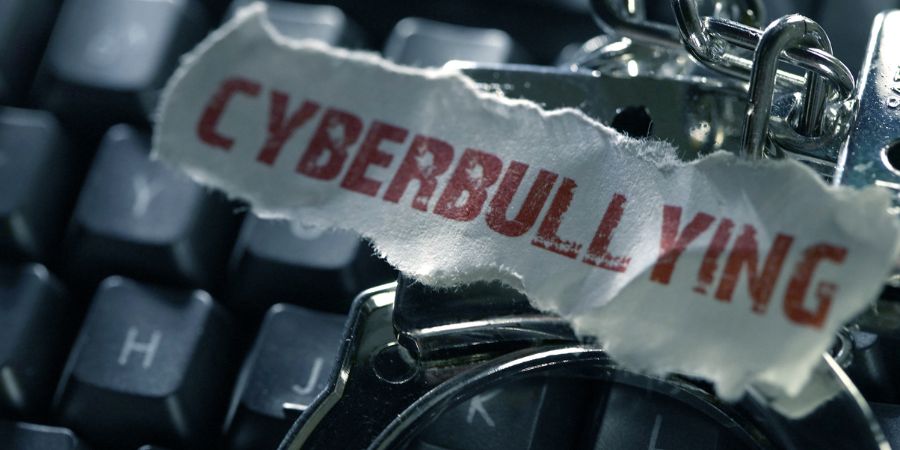In today’s digital age, the prevalence of cyberbullying has become a pressing concern. With the advancement of technology and the widespread use of social media platforms, individuals have found new ways to harm and harass others online. But why does cyberbullying happen? What are the underlying factors that contribute to this alarming phenomenon?
In this blog post, we’ll explore the various reasons behind why cyberbullying occurs. We’ll delve into the psychology of cyberbullying, examining factors such as anonymity, power dynamics, and social and emotional influences. Additionally, we’ll discuss the role that social media and technology play in enabling and exacerbating cyberbullying incidents.
Furthermore, we’ll examine the societal and cultural influences that contribute to cyberbullying. From the impact of media and pop culture to the effects of peer pressure and family dynamics, we’ll shed light on how these factors shape the occurrence of cyberbullying in our society.
Finally, we’ll explore preventive measures and solutions to combat cyberbullying. From education and awareness campaigns to legal actions and policies, we’ll discuss the role that parents, teachers, and institutions can play in creating a safer online environment.
By gaining a deeper understanding of why cyberbullying happens, we can work towards developing effective strategies to prevent and address this issue. Join us in this blog series as we unravel the complexities of cyberbullying and explore ways to promote kindness and respect in the digital world.
Understanding Cyberbullying: Definition and Forms
Cyberbullying is a form of harassment and aggression that takes place in the digital realm. It involves using technology, such as social media, messaging apps, or online platforms, to target and harm individuals. To fully grasp why cyberbullying happens, it is essential to understand its definition and the various forms it can take.
Definition of Cyberbullying
Cyberbullying can be defined as the intentional and repeated use of digital platforms to intimidate, threaten, or harm others. It typically involves behaviors such as spreading rumors, sharing explicit or embarrassing content, making derogatory comments, or impersonating someone with the intent to deceive or humiliate. Unlike traditional bullying, cyberbullying occurs online and can reach a wider audience, making it difficult for victims to escape the harassment. It is essential to also understand that anyone can be a victim, so everyone needs to recognize the signs of bullying in all online environments.
Forms of Cyberbullying
Cyberbullying can manifest in several forms, each with its own unique characteristics. Understanding these forms is crucial in comprehending the motives behind cyberbullying incidents. Here are some common types of cyberbullying:
- Harassment: This involves sending abusive messages, threats, or hate speech to the victim repeatedly. It can occur through private messages, public comments, or even impersonating the victim online.
- Exclusion: Exclusion is a form of cyberbullying where individuals are intentionally left out or excluded from online groups or activities. This can lead to feelings of isolation and social exclusion.
- Cyberstalking: Cyberstalkers engage in persistent monitoring, tracking, and following of the victim’s online activities. They may gather personal information and use it to harass, intimidate, or blackmail the victim.
- Doxing: Doxing refers to the act of publicly revealing and disseminating a person’s private or personal information, such as their address, phone number, or workplace, with the intention of causing harm or inciting others to harass them.
- Identity theft: In some cases, cyberbullies may impersonate their victims online by creating fake profiles or using their personal information without consent. This can lead to reputation damage and further psychological distress.
- Outing: Outing involves sharing private or sensitive information about an individual without their consent. This could include personal secrets, embarrassing photos, or confidential conversations, resulting in humiliation and emotional harm.
By understanding the various forms of cyberbullying, we can begin to delve deeper into the motivations and factors that contribute to its occurrence. In the next sections, we will explore the psychology behind cyberbullying, shedding light on the underlying reasons why individuals engage in such harmful behavior.

The Psychology Behind Cyberbullying
Cyberbullying is not simply a random act of aggression but rather a behavior rooted in complex psychological factors. To understand why cyberbullying happens, it is crucial to explore the underlying psychology behind this harmful behavior. In this section, we will delve into the psychological aspects that contribute to cyberbullying incidents.
Anonymity and Cyberbullying
One of the key factors that contribute to the occurrence of cyberbullying is the anonymity provided by online platforms. When individuals can hide behind usernames or fake profiles, they feel a sense of detachment and reduced accountability for their actions. This anonymity can embolden cyberbullies, as they believe they can escape the consequences of their behavior. Moreover, the absence of face-to-face interaction in the digital realm can lead to a lack of empathy and increased aggression.
Power Dynamics in Cyberbullying
Cyberbullying often involves a power dynamic, where the bully perceives themselves as superior or more dominant than the victim. This power differential can stem from various factors, such as social status, popularity, or even the ability to manipulate others online. By exerting power over their victims, cyberbullies attempt to assert control and boost their own self-esteem. Understanding these power dynamics is crucial in addressing cyberbullying and empowering victims.
Social and Emotional Factors
Several social and emotional factors contribute to the occurrence of cyberbullying. For some individuals, engaging in cyberbullying may be driven by a desire for social acceptance or to fit in with a particular group. Peer pressure, the need for validation, and the fear of becoming a target themselves can influence individuals to participate in cyberbullying behaviors. Additionally, underlying emotional issues, such as feelings of insecurity, anger, or resentment, can manifest in cyberbullying as a way to vent frustrations or seek revenge.
By examining the psychological factors behind cyberbullying, we can gain insight into the motivations and mindset of cyberbullies. This understanding is crucial in developing effective strategies to prevent and address cyberbullying incidents. In the following sections, we will explore the role of social media and technology in cyberbullying, shedding light on how these platforms facilitate and amplify harmful behaviors.
The Role of Social Media and Technology in Cyberbullying
The widespread use of social media platforms and technology has significantly impacted the occurrence and intensity of cyberbullying incidents. In this section, we will delve into the role that social media and technology play in enabling and perpetuating cyberbullying behaviors.
Ease of Communication and Cyberbullying
Social media platforms and digital communication tools have made it easier than ever for individuals to connect with others. While this has many positive aspects, it has also provided cyberbullies with a convenient means to target their victims. The immediacy and accessibility of online communication allow cyberbullies to harass their victims at any time and from anywhere. This constant connectivity can lead to a heightened sense of vulnerability for victims, as they are unable to escape the online harassment.
Social Media Platforms and Cyberbullying
Social media platforms, with their vast user bases and interactive features, have become hotspots for cyberbullying incidents. The ability to post comments, share content, and engage in discussions on these platforms gives cyberbullies a wide range of opportunities to target and humiliate their victims. Moreover, the viral nature of social media can amplify the reach and impact of cyberbullying, as hurtful messages or embarrassing content can quickly spread to a large audience.
Effects of Digital Environment
The digital environment created by social media and technology can exacerbate the effects of cyberbullying on both victims and perpetrators. For victims, the constant exposure to negative and hurtful content can lead to emotional distress, anxiety, and depression. The 24/7 nature of online interactions can make it challenging for victims to escape the vicious cycle of cyberbullying. On the other hand, for cyberbullies, the online environment may desensitize them to the consequences of their actions, making them more likely to engage in further acts of harassment.
Understanding the role of social media and technology in cyberbullying is crucial in addressing this issue effectively. In the next section, we will explore the societal and cultural influences that contribute to the occurrence of cyberbullying, shedding light on how external factors shape this behavior.
Societal and Cultural Influences on Cyberbullying
Cyberbullying is not an isolated phenomenon but is influenced by various societal and cultural factors. Understanding these influences is essential in comprehending why cyberbullying happens and developing strategies to prevent and address it. In this section, we will explore the societal and cultural factors that contribute to the occurrence of cyberbullying.
Influence of Media and Pop Culture
Media and pop culture play a significant role in shaping social norms and attitudes. The portrayal of aggression, bullying, and online harassment in movies, TV shows, and music can normalize such behavior and desensitize individuals to the consequences of cyberbullying. Additionally, the glorification of online trolling or “internet fame” can incentivize some individuals to engage in cyberbullying as a means to gain attention or validation.
Peer Pressure and Cyberbullying
Peer pressure can be a powerful influence on individuals’ behavior, including their participation in cyberbullying. The desire to fit in, gain social acceptance, or avoid becoming a target themselves can push individuals to engage in cyberbullying behaviors, even if it goes against their own moral compass. The fear of being ostracized or excluded from social circles can lead individuals to conform to the norms established by their peers, perpetuating a culture of cyberbullying.
Family Environment and Cyberbullying
The family environment also plays a role in the occurrence of cyberbullying. Children who grow up in households where aggression, hostility, or bullying behaviors are prevalent may internalize these patterns and replicate them in their online interactions. Additionally, lack of parental supervision or guidance regarding online behavior can contribute to the perpetration of cyberbullying. A supportive and nurturing family environment, on the other hand, can help prevent cyberbullying by fostering empathy, respect, and responsible digital citizenship.
By recognizing the societal and cultural influences on cyberbullying, we can work towards creating a more compassionate and inclusive society. In the next section, we will discuss preventive measures and solutions to combat cyberbullying, focusing on education, legal actions, and the roles of parents, teachers, and institutions.

Preventive Measures and Solutions to Cyberbullying
Addressing the issue of cyberbullying requires proactive measures and collaborative efforts from various stakeholders. In this final section, we will explore the preventive measures and solutions that can be implemented to combat cyberbullying effectively.
Education and Awareness
Education plays a fundamental role in preventing and addressing cyberbullying. Schools, parents, and communities should prioritize comprehensive education programs that promote digital literacy, empathy, and responsible online behavior. By teaching students about the consequences of cyberbullying, fostering empathy towards others, and encouraging respect for diversity, we can create a culture of kindness and respect in the digital world. Additionally, raising awareness among parents, teachers, and caregivers about the signs of cyberbullying and how to support victims is vital in early intervention and prevention.
Legal Actions and Policies
Legal actions and policies can serve as deterrents for cyberbullying and provide recourse for victims. Governments and policymakers should enact and enforce legislation that specifically addresses cyberbullying, ensuring that it is recognized as a serious offense with consequences. These laws should encompass various aspects, such as online harassment, privacy invasion, and the creation and dissemination of explicit or harmful content. Additionally, social media platforms and technology companies should have robust policies in place to combat cyberbullying and swiftly respond to reports of abusive behavior.
Role of Parents, Teachers, and Institutions
Parents, teachers, and institutions play a crucial role in preventing and addressing cyberbullying. Parents should maintain open lines of communication with their children, creating a safe space for them to discuss their online experiences and concerns. They should also set clear boundaries and establish guidelines for responsible online behavior. Teachers and schools should incorporate cyberbullying prevention programs into their curriculum, fostering a safe and inclusive learning environment. Institutions should have protocols in place to respond to cyberbullying incidents promptly and support victims, including counseling services and disciplinary measures when necessary.
By implementing these preventive measures and solutions, we can work towards creating a digital landscape that promotes empathy, respect, and well-being for all individuals. Together, we can combat cyberbullying and foster a safer online environment for everyone.
In conclusion, cyberbullying happens due to a combination of psychological, technological, societal, and cultural factors. Understanding these factors is essential in developing effective strategies to prevent and address cyberbullying incidents. By promoting education, awareness, legal actions, and the active involvement of parents, teachers, and institutions, we can create a society that values kindness, empathy, and respect in both the physical and digital realms. Let us join hands in the fight against cyberbullying and strive towards a harmonious and inclusive digital world.
Contact AST Cybersecurity today to learn more about cyberbullying and its effects.

